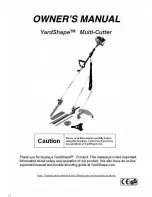
5 Stirring operation
Thermo Scientific
12
50108213_02.2007
5 Stirring operation
5.1 Stirring vessels
You should use stirring vessels which are circular in shape, and made of glass,
nonmagnetic metal or plastic. Wall thicknesses should be of an even thinness. Flat-
bottomed glass vessels (not concave) and smooth surfaces improve the running
quality of the magnetic stirring bars.
When stirring larger volumes of liquid, you should use stirring vessels having a
relatively small diameter and a thin bottom.
The following table gives examples of suitable stirring vessels, and the available
stirring points. In the case of larger vessels, not every stirring point (6) can be
occupied by a vessel.
Type
MULTIPOIN
T 6
MULTIPOINT
15
POLY 15
Stirring vessels
Nominal
capacity
Available stirring points
Erlenmeyer flasks
and flat-bottomed
flasks
25 ml
50/100 ml
250/500 ml
1000 ml
6
6
6
6
15
15
8/6
6
Beakers (tall in
shape)
25 ml
50 ml
100/250 ml
600/1000 ml
2000 ml*
6
6
6
6
6
15
15
15
8
6
Centrifuging tubes
Test tubes
Cultivating tubes
15**
Distance between
stirring points (mm)
130
65
*) restricted range of application
**) test tube rack required








































